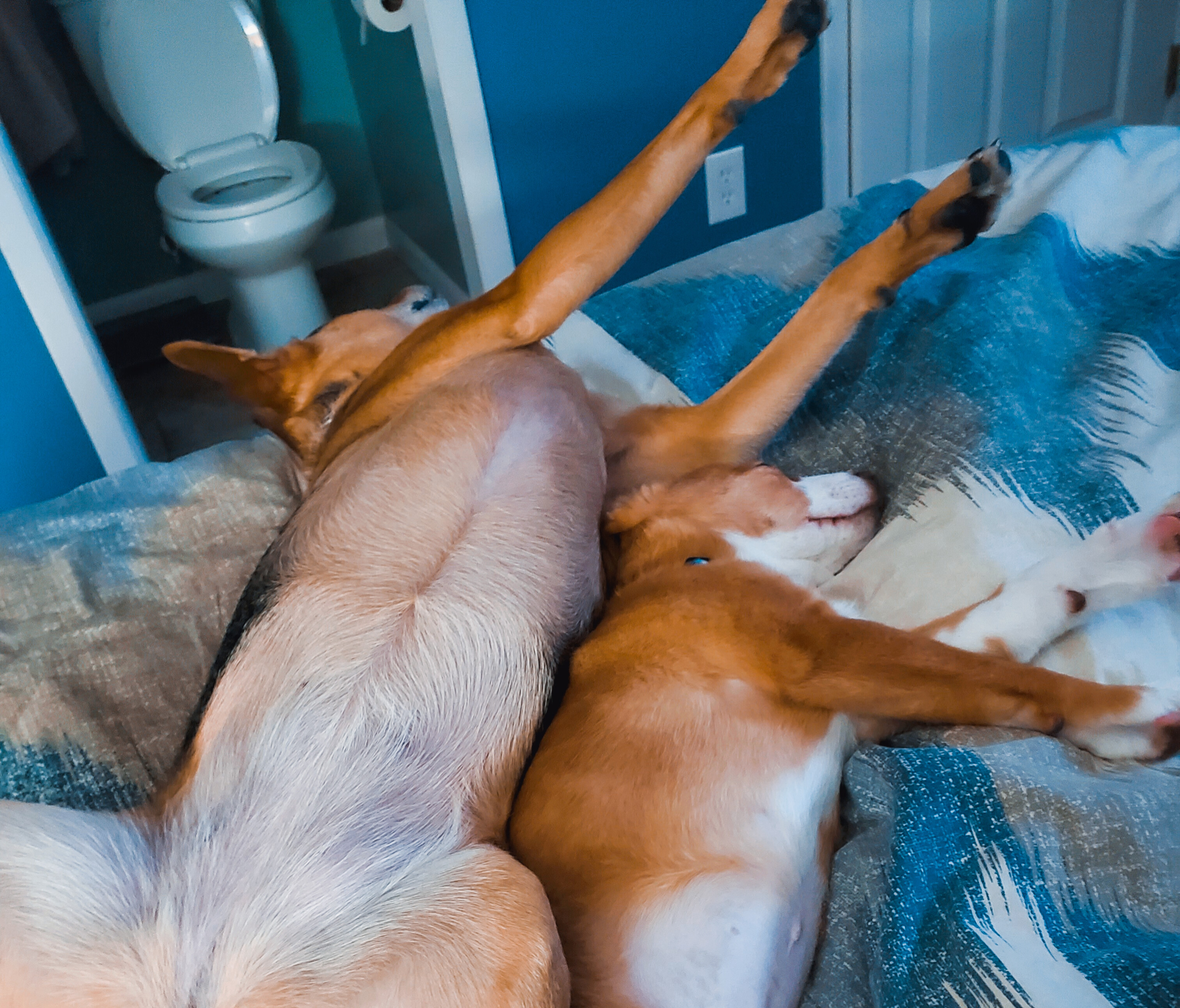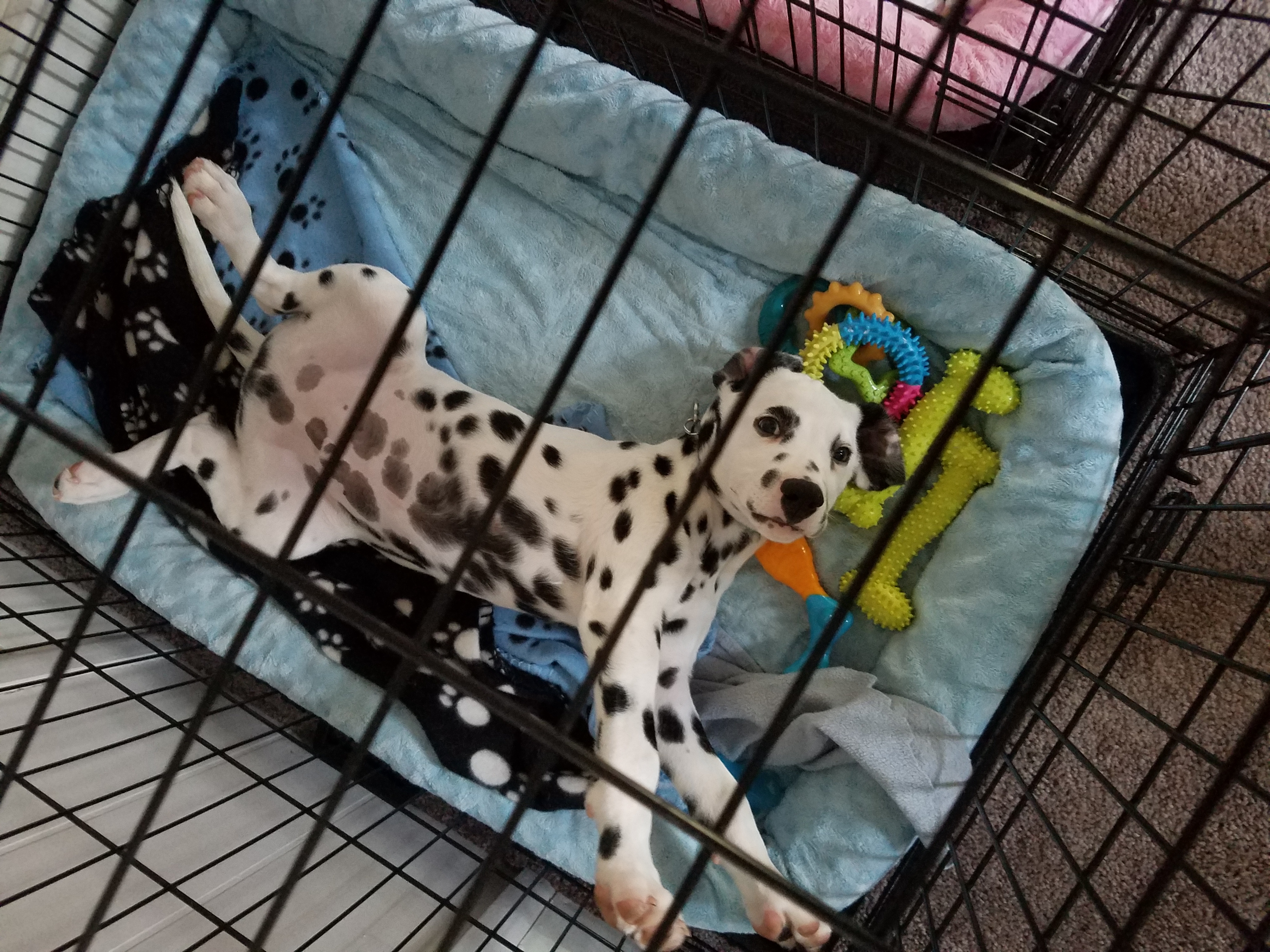
Crate training is probably everyone’s least favorite thing to do when you first get a puppy! The barking, scratching, and stress. Just like Lady and The Tramp, most people resort to the “just one night” method. And I can tell you, I am all for nightly dog cuddles but the crate is such an important tool for a dog. It helps reduce anxiety in dogs and gives them a safe space to relax when they need it. I came up with a bunch of crate training tips and exercises for puppies to help owners crate train their pups in a stress-free manner!

Crate Training Basics
Get a good crate. I suggest a wire crate, like this one. It is the most classic dog crate and they are easy to collapse and light weight. That makes things easier is transporting to the dog sitter’s! Plus, if the dog has visual triggers, you can always purchase a crate cover, like this one!
Never take a puppy out of its crate if it is crying or barking! If you release a puppy from their crate while they are anything but quiet, they’ll associate their behavior with freedom! Which is rewarding the exact thing you do not want. The only time to let a puppy out of their crate is when they are quiet and peaceful.
Never use the crate as punishment! No matter how mad you are at the puppy for what ever they possibly did, do not scold them and put them in their crate. You just made their safe space, scary. If you need the puppy to be in their crate because of what ever reason. Always take them there calmly. No emotions on our sleeves!

Naked puppies only in crates. Never put a puppy in a crate with a collar or harness on, if it gets stuck it can cause the puppy to choke.
Have the puppies take naps in their crate throughout the day to become more familiar with resting and their crate. A tired puppy is a good puppy to crate train. So when nap time is coming, start your luring process and get them settled for a nice crate nap.
Have specific (crate safe) toys for crate time and only crate time. This makes the crate even more exciting and fun! Especially if you rotate toys in the crate, then it is even more new and exciting with each trip. Ex: Kong, Benebone, Nylabone, antler. For other suggestions, check out the Best Doggie Snacks For Crate Time.
Feeding Meals in the Crate
Open the crate door, start with the food in a bowl 1 foot in front of the crate and let the puppy eat a little. As the puppy takes bites slowly move the bowl to 6 inches in front of the crate, then touching the crate then on the inside of the door then 6 inches in the crate. If the puppy loses interest start back at 1 foot in front of the crate and shake the bowl to regain focus. This also helps avoid resource guarding because you control the food.
Luring into a Crate
First you need to teach the puppy to follow your hand. Grab a training treat (these are my favorites) and place it in your finger so the puppy can nibble it but not take it. While the puppy is trying to get the treat, slowly move your arm so the puppy is walking with the treat. Try that two to three times and make sure to give the puppy the treat as a reward. After the puppy gets the hang of it, start the exercise and have the puppy walk into the crate. Make sure to give the reward after they turn around and are facing the exit. Use your crate command when rewarding. For the first three times, let the puppy walk out of the crate. Then the next three times, close the crate door for 1 second. Three more times, closing the crate door for 5 seconds. Try this exercise at least five times a day and always before leaving the house.
Crate Training Game: Find It
You always want to make the crate as interesting as possible. If the puppy has left over breakfast or a favorite training treat, take the kibble and hide it in a blanket in the crate. When you get the puppy to go into their crate, say “find it” and watch as they search for their treats. This also helps exercise their mind because they are learning to search for things with their nose instead of their eyes.
Crate Training Game: “Uh oh”
After practicing the above exercise for several days is when you start this one. Put your puppy in a crate with their crate command and close the door. Stay in the room with the puppy. If the puppy barks or whines say “uh oh” and leave the room. As soon as the puppy stops whining or barking re-enter the room and say “good boy” or “good girl” or “good crate” but leave them in the crate. If they bark or whine, repeat until completely settled. If they are in their crate for about 5 minutes with no noise, let them out and love them up.

Follow these tips and tricks and you’ll have a crate trained pup, Like Lily!